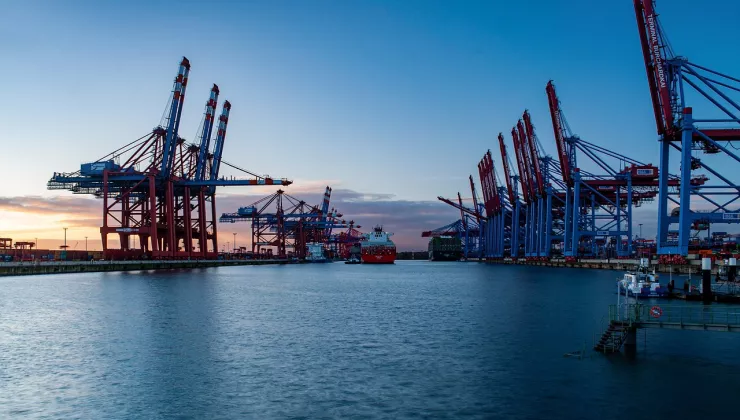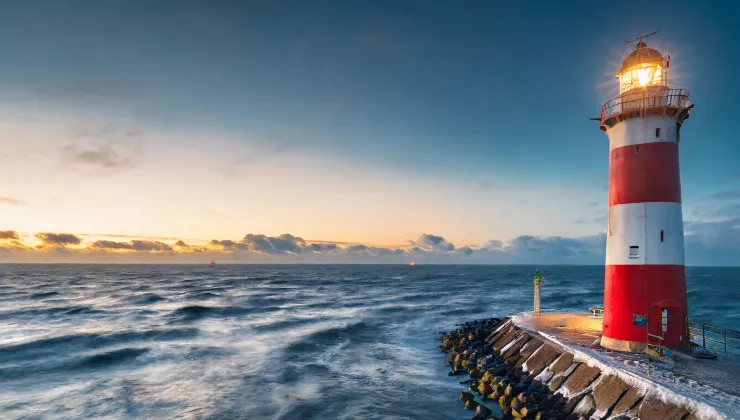Find out more about the European programme Horizon Europe
Horizon Europe is the European Union’s most important framework programme for research and innovation. This initiative runs from 2021 to 2027 and the total budget is no less that €95.5 billion. The programme comprises three vertical pillars and several horizontal actions.
- Pillar 1 - Excellent Science: Strengthening and expanding the EU’s science base;
- Pillar 2 - Global challenges and European industrial competitiveness: Promoting important technologies and solutions that support the EU policy and objectives regarding sustainable development;
- Pillar 3 - Innovative Europe: Promoting market-creating breakthroughs and ecosystems that drive innovation; and
- Horizontal actions: Broader participation and strengthening the European research space
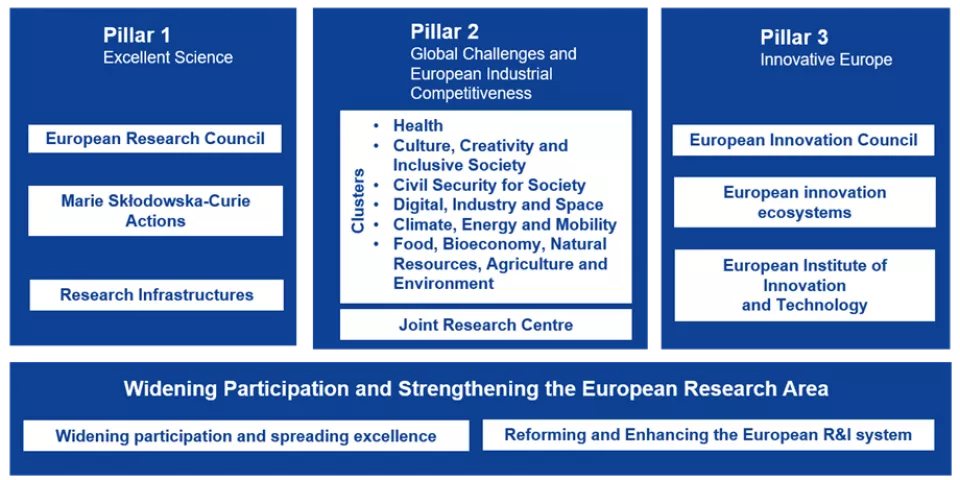
Part of a European strategy
Europe is committed to a number of major objectives, such as the European Green Deal, Europe’s Beating Cancer Plan, and the UN’s Sustainable Development Goals. These ambitions are translated into five missions:
- Cancer;
- Adjustment to climate change, including the societal transformation;
- Healthy oceans, seas, coasts and inland waterways;
- Carbon-neutral and smart cities; and
- Soil health and food.
These missions will in turn create many specific actions, including the portfolio management of Horizon Europe projects. Whenever relevant, project calls will explicitly refer to e.g. the mission “Healthy oceans, seas, coasts and inland waterways”.
In addition to these missions, the European Commission will also establish partnerships with EU countries, the private sector, institutions and other stakeholders. Three types of partnerships are envisaged: the co-programmed, co-funded and institutionalised partnerships.
A partnership will always be linked to a certain topic and only be established if there is no more suitable instrument available within Horizon Europe. They will be open to a larger group of participants and implementers, have a clear end date and be more efficient, ambitious and aligned with European policy goals.
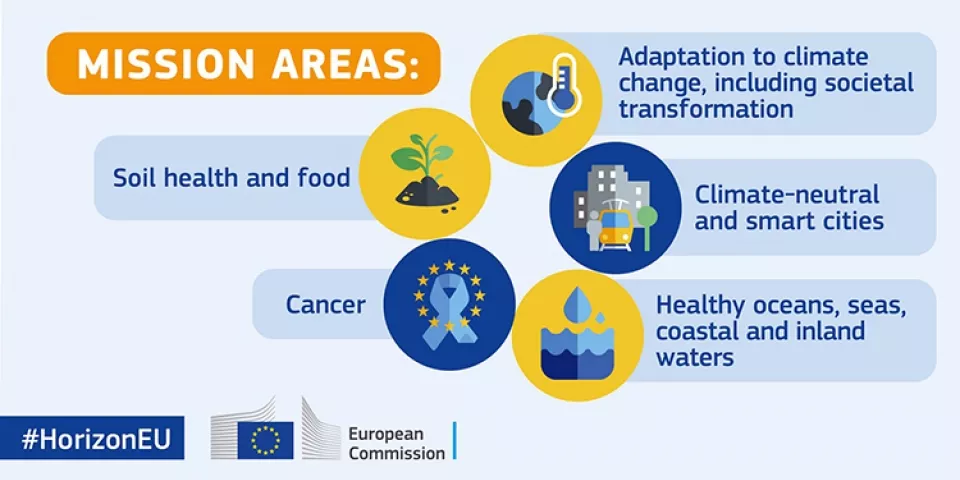
Pillar 2: Global challenges and European industrial competitiveness
Through Pillar 2, the European Union aims to promote important technologies and solutions that support the EU policy and objectives regarding sustainable development. Pillar 2 thus presents the most opportunities for companies. This pillar is divided into six clusters:
- Cluster 1: Health
- Cluster 2: Culture, creativity and inclusive society
- Cluster 3: Civil security for society
- Cluster 4: Digital, industry and space
- Cluster 5: Climate, energy and mobility
- Cluster 6: Food, bio-economy, natural resources, agriculture and environment
Although multiple clusters can be of interest for projects in the blue economy, Blue Cluster has mainly focused on developing Clusters 5 and 6 in recent months.
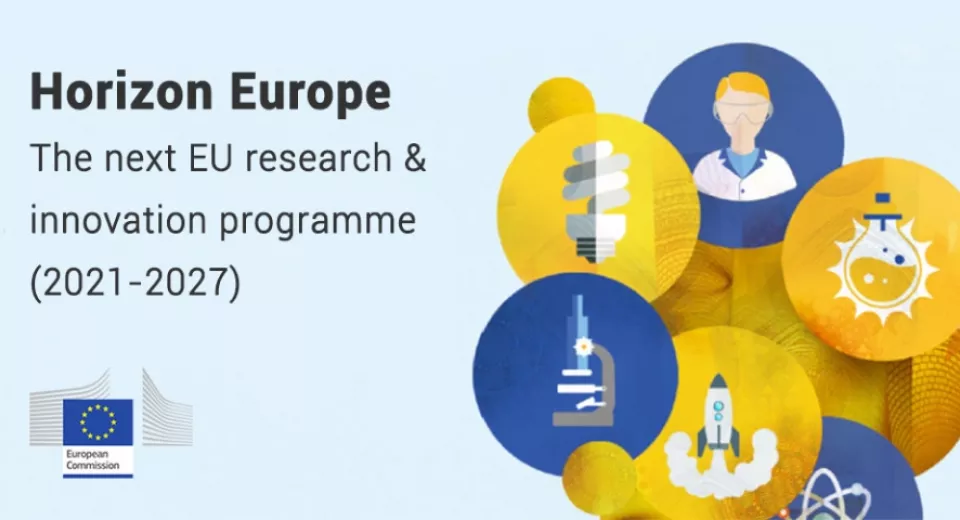
Cluster 5: Climate, energy and mobility
Cluster 5 encourages the global transition to a carbon-neutral and resilient economy by promoting climate science and accelerating global acceptance of climate actions (both mitigation and adaptation) in accordance with the Paris Agreement and the UN’s Sustainable Development Goals.
This includes improving Earth system knowledge through various socio-economic projects, the assessment of climate change consequences as well as the design and evaluation of mitigation and adaptation solutions and projects and related societal transformation (source).
The destinations within cluster 5 are:
- Climate sciences and answers for the transition to carbon-neutrality
- Cross-sectoral solutions for the climate transition
- Sustainable, secure and competitive energy supply
- Efficient, sustainable and inclusive energy consumption
- Clean and competitive solutions for all modes of transport
- Safe and resilient transport and smart mobility services for passengers and goods
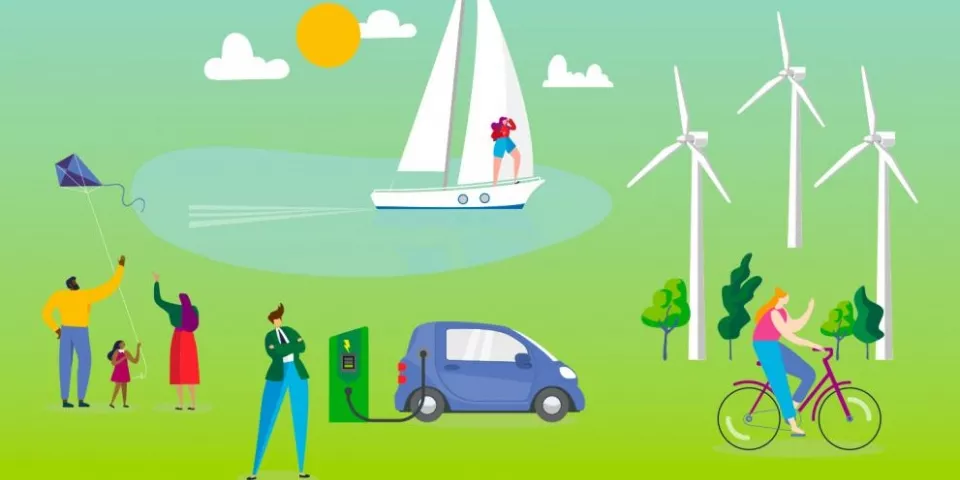
Cluster 6: Food, bio-economy, natural resources, agriculture and environment
Cluster 6 contributes to the restoration of affected ecosystems, the reversal of biodiversity loss and the mitigation of climate change, as well as the sustainable and circular management of natural onshore and offshore resources. This will strengthen healthy ecosystems and biodiversity, which are indispensable for sustainable agriculture, aquaculture and fisheries.
A better understanding of climate mitigation and the adaptative potential of ecosystems will, including through monitoring and environmental observations, contribute to climate-smart and sustainable agriculture, forestry systems, aquaculture and fisheries (source).
The destinations within cluster 6 are:
- BIODIV - Biodiversity and ecosystem services
- FARM2FORK - Fair, healthy and environmentally friendly food systems
- CIRCBIO - Circular economy and bio-economy
- ZEROPOLLUTION - Clean environment and no pollution
- CLIMATE - Land, oceans and water for climate action
- COMMUNITIES - Resilient, inclusive, healthy and green rural, coastal and urban communities
- GOVERNANCE - Innovative management, environmental observations and digital solutions supporting the Green Deal
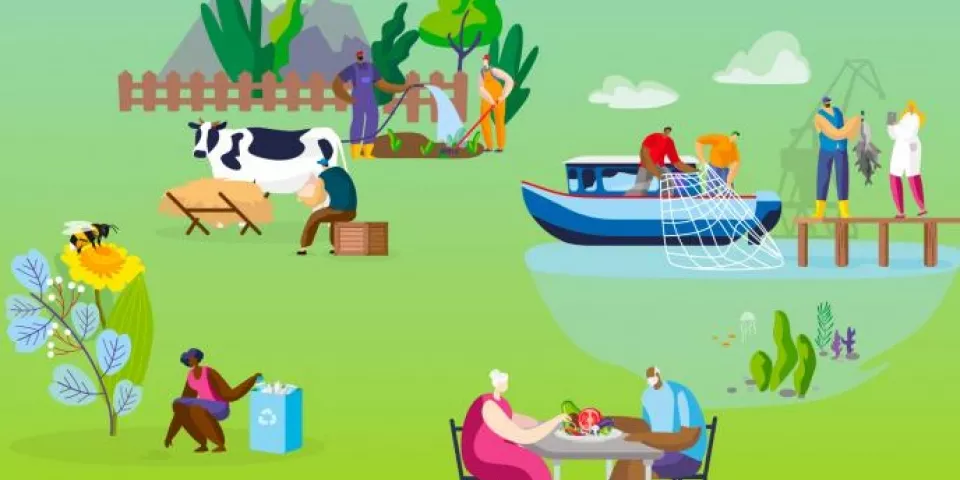
Calls
Within each cluster, destinations are defined with specific substantive ambitions as well as groups of calls with a certain budget and timing. A two-year work programme is created for a cluster, e.g. 2021 – 2022
Those destinations have either a sequence number (e.g. D1) or an acronym (e.g. BIODIV). Furthermore, each group of calls has a sequence number (e.g. 01) and the specific calls also have a sequence number (e.g. 01)
This means that each call has a unique code that may look like this:
- HORIZON-CL5-2021-D1-01-07
- HORIZON-CL6-2021-BIODIV-01-02
Would you like to know which calls have already been launched? Take a look at the open calls.
Types of actions
For each specific call, a type of actions, a total budget for the call, the expected budget of the projects and the number of projects that can be supported have also been determined. The type of action of a certain call basically determines:
- the scope of what is to be funded;
- the subsidy rate;
- specific evaluation criteria to be eligible for funding; and
- the use of simplified forms of costs such as lump sums.
For an individual call, this may be deviated from, but it will be explicitly stated. Subsidy rates can also be call-specific.
Potential types:
Research and Innovation Actions (RIA): Activities whose main focus is gaining knowledge and examining the feasibility of new or improved technologies, products, processes, services or solutions. This could be basic and applied research, technological developments and integrations, tests, demonstrations and assessment of small-scale prototypes in a laboratory or simulated environment. These will be funded 100%.
Innovation Actions (IA) — Activities that are directly aimed at preparing plans and regulations or designs for new, adapted or improved products, processes or services. These activities could be prototyping, testing, demonstrations, pilots, large-scale product assessment and market replication. These will be funded 70% for profit and 100% for non-profit.
Coordination and Support Actions (CSA) — Activities that contribute to the Horizon Europe objectives. This does not apply to R&I activities, unless they are carried out as part of the participation and dissemination of excellence (part of ‘Broader participation and strengthening of the European research space’). These will be funded 100%.
Overview of funding rates
| Research & Innovation Actions | 100% |
| Innovation Actions | 70% (profit) 100% (non-profit) |
| Coordination and Support Actions | 100% |
Alternative types
In addition to the above actions, there are also less common actions such as Programme Co-Fund Actions (CoFund), Innovation and Market Deployment Actions (IMDA), Training and Mobility Actions (TMA), Pre-Commercial Procurement actions (PCP) and Public Procurement of Innovative solutions actions (PPI).
In Cluster 4 and 5, the rates will be maximum 60% for companies for calls of co-programmed partnerships.
All information about eligibility, award criteria, procedures, etc. can be found in the General Annexes to the Work Programme 2021 - 2022.
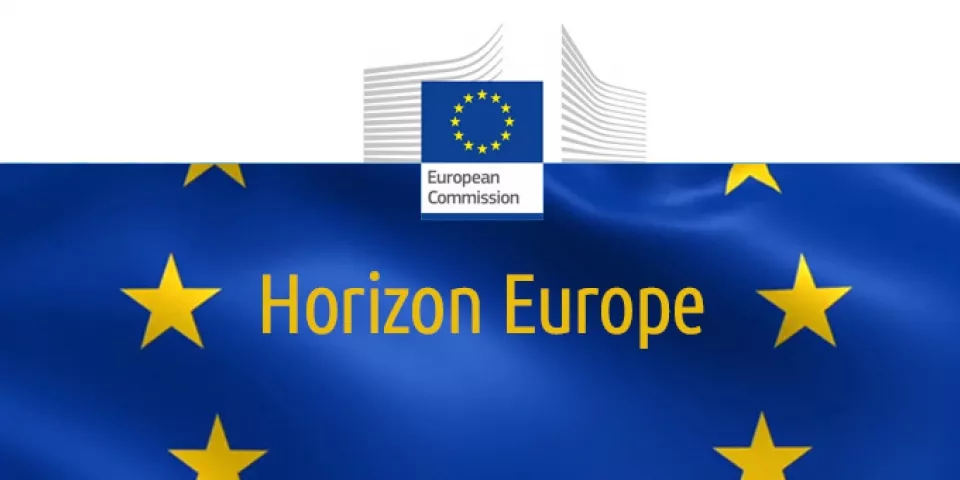
Publication of calls and info sessions
Within Pillar 2, the launch of the 2021 calls is scheduled for 22 June with a deadline on 6 October. The calls will be published on the EU Funding & Tenders Portal of the European Commission.
Interested in participating in calls within Horizon Europe? From 28 June to 9 July, the European Commission organises various information days on the programme. Write down the following dates in your diary:
5 and 6 July: Information days on Cluster 5 - Climate, energy & mobility
7 and 8 July: Information days on Cluster 6 - Food, bio-economy, natural resources, agriculture and environment.

